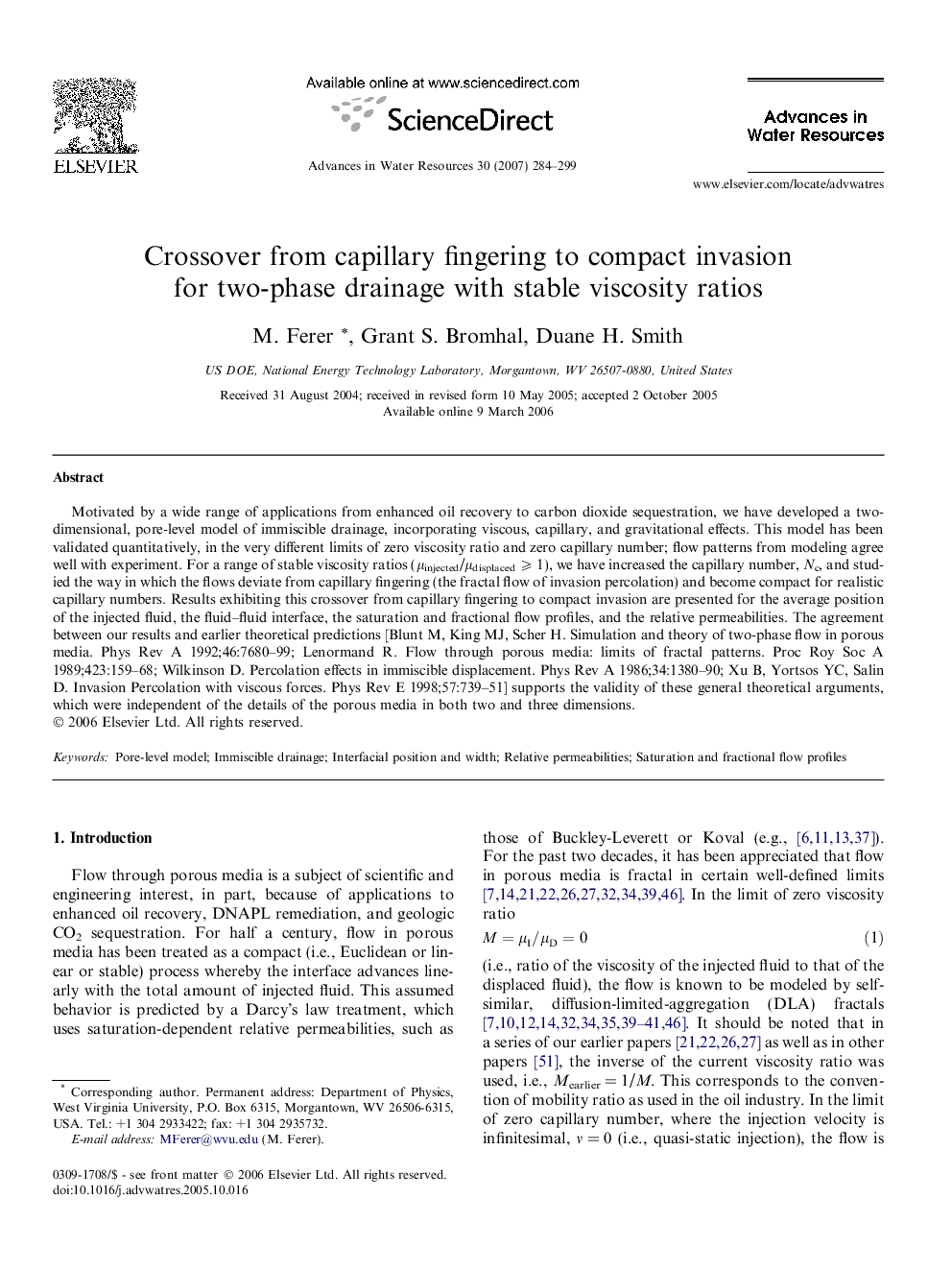| Article ID | Journal | Published Year | Pages | File Type |
|---|---|---|---|---|
| 4526940 | Advances in Water Resources | 2007 | 16 Pages |
Motivated by a wide range of applications from enhanced oil recovery to carbon dioxide sequestration, we have developed a two-dimensional, pore-level model of immiscible drainage, incorporating viscous, capillary, and gravitational effects. This model has been validated quantitatively, in the very different limits of zero viscosity ratio and zero capillary number; flow patterns from modeling agree well with experiment. For a range of stable viscosity ratios (μinjected/μdisplaced ⩾ 1), we have increased the capillary number, Nc, and studied the way in which the flows deviate from capillary fingering (the fractal flow of invasion percolation) and become compact for realistic capillary numbers. Results exhibiting this crossover from capillary fingering to compact invasion are presented for the average position of the injected fluid, the fluid–fluid interface, the saturation and fractional flow profiles, and the relative permeabilities. The agreement between our results and earlier theoretical predictions [Blunt M, King MJ, Scher H. Simulation and theory of two-phase flow in porous media. Phys Rev A 1992;46:7680–99; Lenormand R. Flow through porous media: limits of fractal patterns. Proc Roy Soc A 1989;423:159–68; Wilkinson D. Percolation effects in immiscible displacement. Phys Rev A 1986;34:1380–90; Xu B, Yortsos YC, Salin D. Invasion Percolation with viscous forces. Phys Rev E 1998;57:739–51] supports the validity of these general theoretical arguments, which were independent of the details of the porous media in both two and three dimensions.
